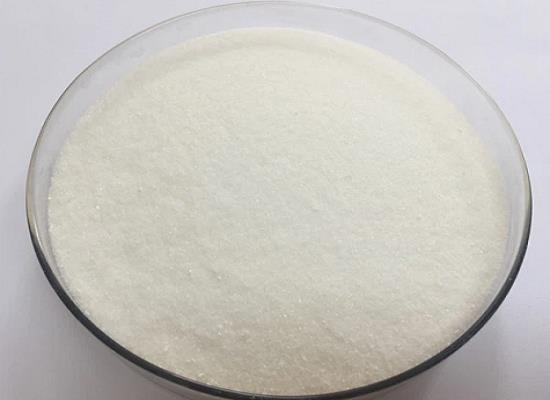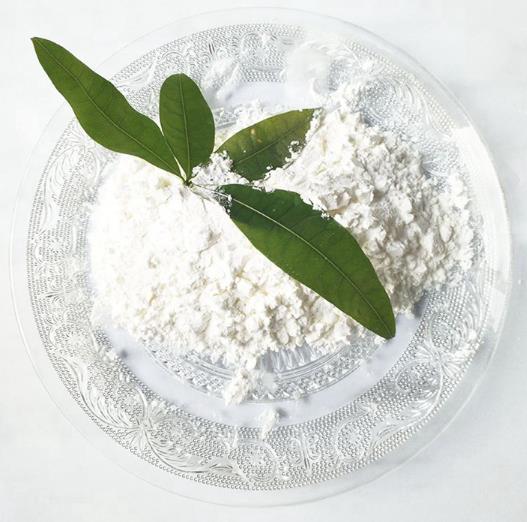Levamisole Hydrochloride: Pharmacological Activities and Toxic Properties
May 23,2024
General Description
Levamisole hydrochloride exhibits potent anthelmintic activity against Neoechinorhynchus buttnerae in juvenile Colossoma macropomum, with in vitro and in vivo studies demonstrating its efficacy without adverse effects on tambaqui. Additionally, Levamisole hydrochloride shows promise in managing allergic rhinitis by attenuating inflammatory responses and modulating cytokine expression. However, its toxic properties, including autoimmune-related adverse effects and immunomodulatory effects, have led to its withdrawal from human medical use in the US. Levamisole hydrochloride's presence as an adulterant in illicit drugs further raises concerns about its potential toxicological impact.

Figure 1. Levamisole hydrochloride
Pharmacological Activities
Anthelmintic Activity
Levamisole hydrochloride has been studied for its pharmacological activity as an anthelmintic in the treatment of Neoechinorhynchus buttnerae infestation in juvenile Colossoma macropomum. Acanthocephalosis, caused by N. buttnerae, poses a threat to fish farming in the Amazon region. The study evaluated the efficacy of therapeutic LVC baths against N. buttnerae and their impact on the blood parameters of juvenile tambaqui. In both in vitro and in vivo tests, Levamisole hydrochloride demonstrated significant efficacy. In the in vitro assessment, LVC treatments at various concentrations (T25, T50, T75, and T100) showed varying effectiveness in immobilizing N. buttnerae, with higher concentrations achieving 100% efficacy in shorter exposure times. The parasites exhibited reduced motility, proboscis retraction, coiling, rigidity, and swelling during exposure to Levamisole hydrochloride. Furthermore, the Levamisole hydrochloride concentration lethal to 50% of tambaqui (LC50-72h) was found to be 115 mg/L, indicating a relatively high tolerance level for the fish. In the in vivo evaluation, two different therapeutic bath protocols were employed, both of which demonstrated substantial effectiveness against N. buttnerae without causing significant clinical intoxication signs in the fish. Importantly, no adverse effects on tambaqui blood parameters were observed, indicating that Levamisole hydrochloride was highly effective in controlling N. buttnerae infestation without disrupting the homeostasis of juvenile tambaqui. These findings underscore the potential of Levamisole hydrochloride as a promising anthelmintic agent in the management of acanthocephalosis in aquaculture settings. 1
Management of Allergic Rhinitis
Levamisole hydrochloride is a pharmaceutical compound that exhibits significant pharmacological activity in the management of allergic rhinitis. The study "Topical levamisole hydrochloride therapy attenuates experimental murine allergic rhinitis" provides compelling evidence of its efficacy. When administered locally via intranasal delivery, levamisole has been shown to mitigate the early-phase inflammatory response associated with allergic rhinitis. This is achieved through several mechanisms, including the reduction of histamine levels, suppression of edema and eosinophil infiltration, and a decrease in ovalbumin-specific serum IgE levels. Furthermore, the study revealed that Levamisole hydrochloride has a notable impact on cytokine gene expression. Specifically, it decreases the expression of IL-4, IL-5, and IL-13 mRNA while increasing the expression of IL-12, IL-18, and IFN-gamma mRNA. These findings indicate that levamisole acts by down-regulating Th2 cytokines similar to budesonide, a commonly used treatment for allergic rhinitis, while also demonstrating distinctive up-regulating effects on Th1 cytokine gene expression. Overall, the pharmacological profile of levamisole hydrochloride offers promising prospects for the management of allergic rhinitis, providing an alternative or adjunct to existing therapeutic options. By attenuating inflammatory responses, modulating cytokine expression, and potentially offering a safer alternative to traditional medications, Levamisole hydrochloride represents a valuable candidate for further exploration in the treatment of allergic rhinitis. 2
Toxic Properties
Levamisole hydrochloride, originally developed as an anthelminthic in the 1960s, has since found applications in veterinary and human medical treatments. Despite its initial wide usage, reports of severe adverse effects led to its withdrawal from human medical use by the US FDA in 2000. However, it remains accessible through medical options outside the US and illicit means worldwide. Levamisole hydrochloride's rapid metabolism in the body produces active metabolites with broad immunomodulatory effects, both stimulating and inhibiting immune responses. While generally well-tolerated at therapeutic doses, autoimmune-related adverse effects such as agranulocytosis, leukopenia, purpura, and necrotized skin tissue have been reported. Individuals with compromised immune systems due to levamisole are more susceptible to infections, including COVID-19. Moreover, its frequent use as an adulterant in illicit street drugs, particularly cocaine, fentanyl, and heroin, raises concerns. In fact, Levamisole hydrochloride has been detected in up to 79% of cocaine samples, reaching levels of 74% by weight. Given its varying presence in illicit drug markets, awareness and consideration of levamisole's potential toxicological impact are paramount for both medical and forensic communities. 3
Reference
1. Moraes JL, de Andrade-Porto SM, Ono EA, Claudiano GDS, Affonso EG. Levamisole hydrochloride as an anthelmintic against Neoechinorhynchus buttnerae in juvenile Colossoma macropomum. J Fish Dis. 2023; 46(8): 803-811.
2. Wang H, Zhang J, Gao C, Zhu Y, Wang C, Zheng W. Topical levamisole hydrochloride therapy attenuates experimental murine allergic rhinitis. Eur J Pharmacol. 2007; 577(1-3): 162-169.
3. Midthun KM, Nelson LS, Logan BK. Levamisole-a Toxic Adulterant in Illicit Drug Preparations: a Review. Ther Drug Monit. 2021; 43(2): 221-228.
- Related articles
- Related Qustion
- Levamisole hydrochloride: Applications, metabolism and side effects May 30, 2023
Levamisole hydrochloride has been widely used in treatment of worm infestations in both humans and animals. As an anthelmintic, it probably works by targeting the nematode nicotinergic receptor.
- levamisole hydrochloride– a synthetic imidazothiazole derivative Jan 2, 2020
Levamisole hydrochloride has been widely used in treatment of worm infestations in both humans and animals. As an anthelmintic, it probably works by targeting the nematode nicotinergic acetylcholine receptor. As an immunomodulator, it appea
1,7-Dimethylxanthine is a naturally occurring alkaloid compound that can enhance alertness and reduce drowsiness.....
Feb 27,2025APIFlorfenicol stands out as a broad-spectrum antibiotic derived from thiamphenicol, primarily used for the treatment of bacterial diseases in farm animals.....
May 23,2024APILevamisole hydrochloride
16595-80-5You may like
Levamisole hydrochloride manufacturers
- Levamisole hydrochloride
-

- $0.00 / 1Kg/Bag
- 2025-04-22
- CAS:16595-80-5
- Min. Order: 1KG
- Purity: 98.5%-101%; EP
- Supply Ability: 1000 KGS
- Levamisole / Levamisole Hcl
-

- $150.00 / 1kg
- 2025-04-22
- CAS:16595-80-5
- Min. Order: 1kg
- Purity: 99%
- Supply Ability: 500kg
- Levamisole
-

- $150.00 / 1kg
- 2025-04-22
- CAS:16595-80-5
- Min. Order: 1kg
- Purity: 99%
- Supply Ability: 500kg






